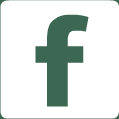Naperville Business Attorney Discusses Tariff Engineering
In the popular Marvel movie franchise, the “X-Men” are a group of superheroes whose powers are the result of genetic mutations. A large part of the films’ storyline focuses on the debate over whether these mutants have the same rights as regular, “non-mutant” people, leading many to view the theme as an allegory for discrimination on the basis of race, gender, and sexual orientation.
But, did you know that in the real world, Marvel takes the opposite position regarding the humanity of its mutants? While many may question why the company would even need to have such an opinion, the answer is quite simple: lower import costs. As a business law attorney, I realize that companies that import goods from other countries are subject to taxes, duties, and tariffs based on the products being imported. Such companies often utilize a practice known as “tariff engineering” to legally reduce their financial obligations.
How Tariff Engineering Works
Tariff engineering, at its most basic, is an effort by manufacturers to have their products classified as a certain type of good as opposed to another that may be subject to higher duty rate. In the Marvel case, for example, the company sought to have their action figures classified as toys rather than dolls. Foreign-manufactured toys, at the time, were subject to a duty rate of 6.8 percent while the duty rate of dolls was 12 percent. When extrapolated to the scale at which Marvel produces their toys, the savings added up quickly. The tariff schedule related to dolls and toys has since been updated to eliminate the distinction.
It is important to understand that tariff engineering is not considered to illegal, as product manufacturers are generally very clear about their intentions. They must also be prepared to defend their assertions about a product’s classification in open court proceedings.
Other Examples
The X-Men toys are far from the only popular products that have been tariff engineered to obtain a lower duty rate. Examples can be found in a variety of other product categories, including:
The Snuggie: The makers of the “As Seen on TV” blanket with sleeves fought to have it recognized as a blanket (8.5 percent duty rate) as opposed to pullover apparel (14.9 percent duty rate); and
Converse All-Stars: The iconic canvas sneakers have a thin layer of fuzzy fabric on parts of the soles that allows them to avoid the 37.5 percent tariff associated with rubber-soled shoes. The sneakers are taxed more like house slippers than athletic shoes.
Questions About Taxes or Tariffs?
If you own a company that relies on imported goods, it is important to full understand your potential tax and duty liabilities. Contact an experienced Naperville business law attorney to get the help you need. Call 630-756-1160 for a confidential consultation at the Gierach Law Firm today.
Sources:
Slate
Washington Post
Smithsonian Institution
Practice Areas
Archive
+2018
+2016
Please note: These blogs have been created over a period of time and laws and information can change. For the most current information on a topic you are interested in please seek proper legal counsel.














